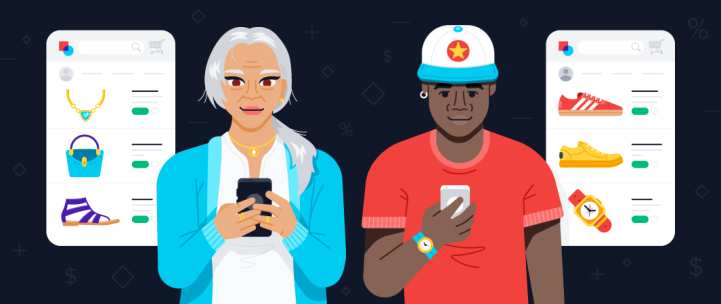If you pay attention, you’ll see ecommerce personalization everywhere you look.
You log into your favorite retailer’s app and you see a welcome message, greeting you by name. The app displays some products in which you might be interested based on recent purchases and searches.
Or, maybe you’re shopping for some new clothes but you can’t decide between two different shirts you like, so you leave them both in your online shopping cart as you ponder. A few hours later, you get an email that nudges you back to your cart with a 20% discount.
Those are examples of ecommerce personalization in action. And the reason you see personalization everywhere is that when it comes to customer engagement and retention, personalization works.
What Is Ecommerce Personalization and Customization?
Ecommerce personalization is a strategy used by successful retailers to deliver customized experiences to consumers using their website or app. Those experiences include things like:
- Personalized welcome and onboarding messages
- Custom product recommendations
- Special offers based on behavior
- Win-back messages and emails
Successful retailers nurture their customers through personalized messaging and a dynamic online experience that feels custom-tailored to their needs and values.
8 Ecommerce Personalization Strategies
You don’t have to look far to see how some of the world’s most successful retailers use ecommerce personalization brilliantly. We’ve highlighted some of the most effective personalization strategies: recently viewed items, personalized product recommendations, and custom offers.
1. Display Recently Viewed Items
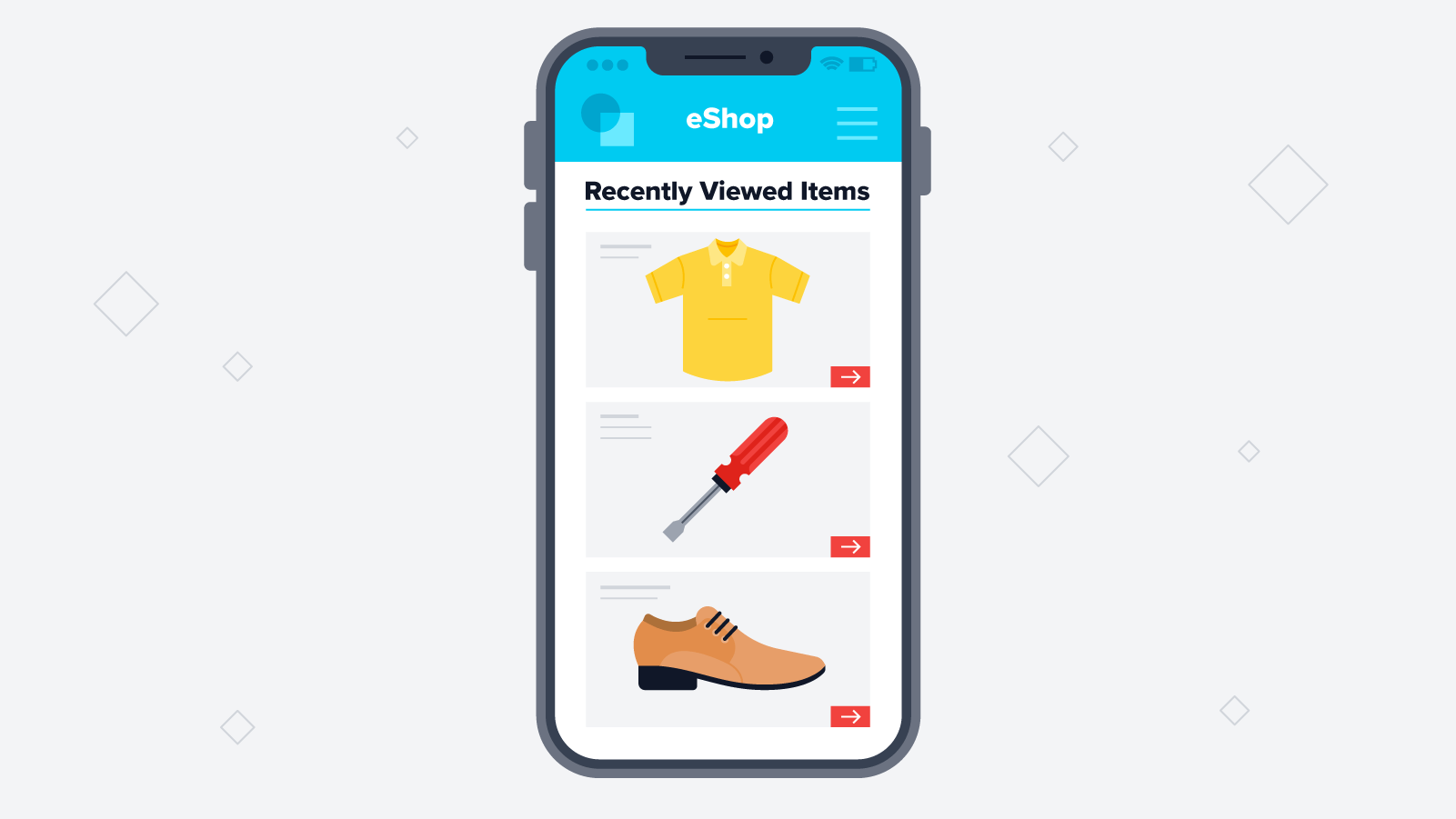
Let’s say your customer browsed your shopping app while they were on their lunch break and spotted an item of interest. They viewed it but didn’t get a chance to add it to their shopping cart before lunch was over and it was time to return to work.
Later, they return to your app in hopes of tracking down the same product. And — bingo! — there it is on the landing page under the heading “Recently Viewed.” They add the item to their cart and make a purchase.
How You Can Use It: Set up your system to capture your customers’ browsing habits — particularly when they view a product or place one in the shopping cart— and use that data to provide a personalized, roadblock-free experience every time they use your app or visit your website. It’ll be easier to encourage them to purchase when you’re showing them things they already want.
2. Match Customer Experience (CX) to Browsing Intent
No two people come to an online retailer’s store with the same goals in mind. It’s important to keep your customers’ shopping intentions at the forefront. If you’ve carefully segmented your customers based on their behavior, you’ll be able to deliver a customized experience when they visit your app or website.
How You Can Use It: Segment your audience based on their shopping behavior. For example, if you know that some of your customers frequently come to your app in search of children’s clothing, you can optimize so these customers see the newest children’s fashions featured on your landing page when they visit.
3. Make Personalized Product Recommendations
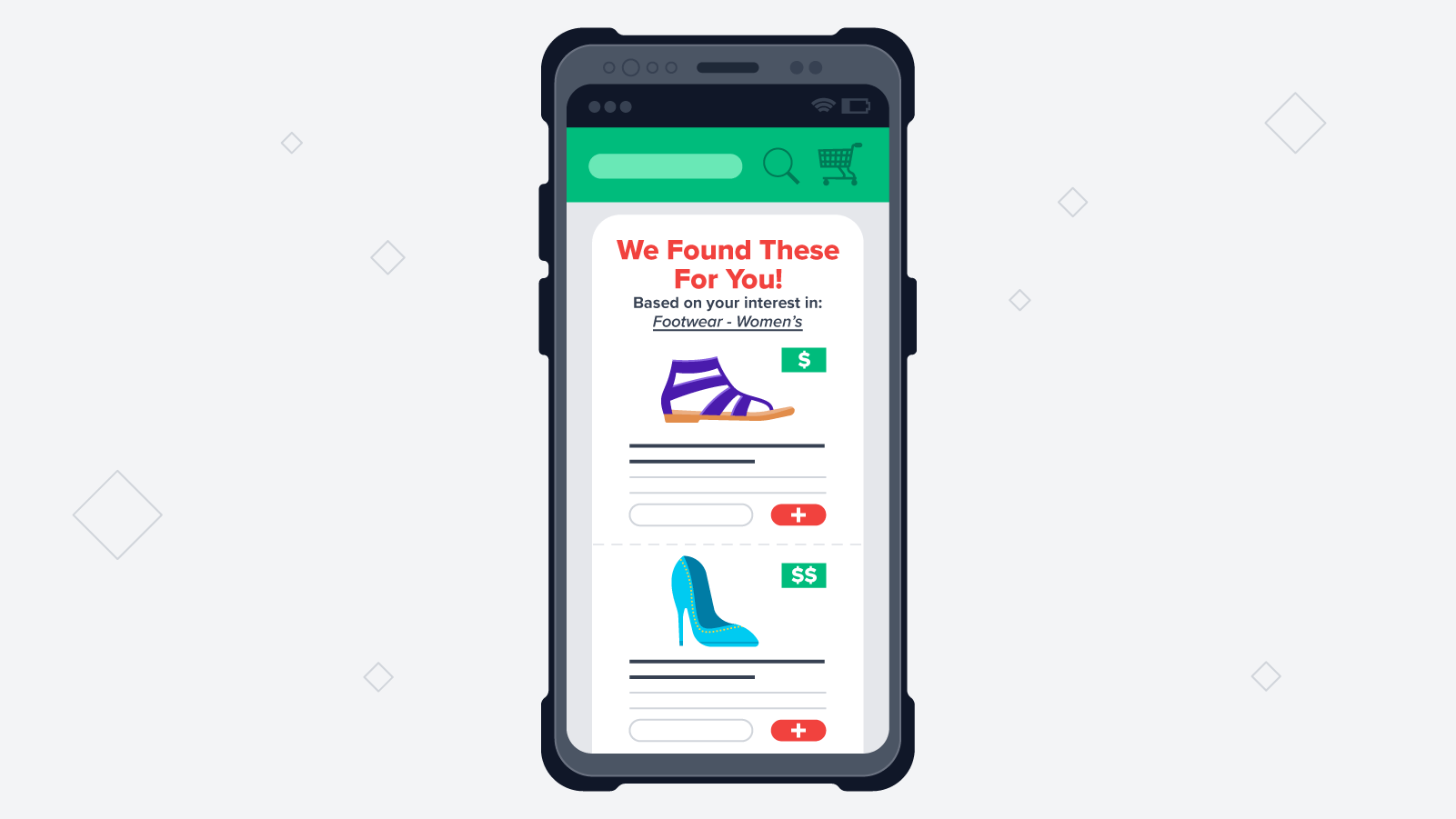
Your customer might come to your app with a specific purchase in mind, but while they’re visiting they might also engage in some virtual window-shopping. Their browsing and previous buying behavior should inform your personalization strategy.
For example, if a customer searches for cake pans, you might alert them about other baking related items such as muffin cups or a stand mixer. This can lead to a higher average purchase.
In fact, Data shows that showing even a single personalized product recommendation can boost average order value (AOV) by 369%.*
How You Can Use It: Provide value, not to mention instant gratification, by offering your customer the most relevant and contextual product recommendations. When you do, you’ll help them discover products that delight them, leading to a higher AOV.
4. Present Curated Offers
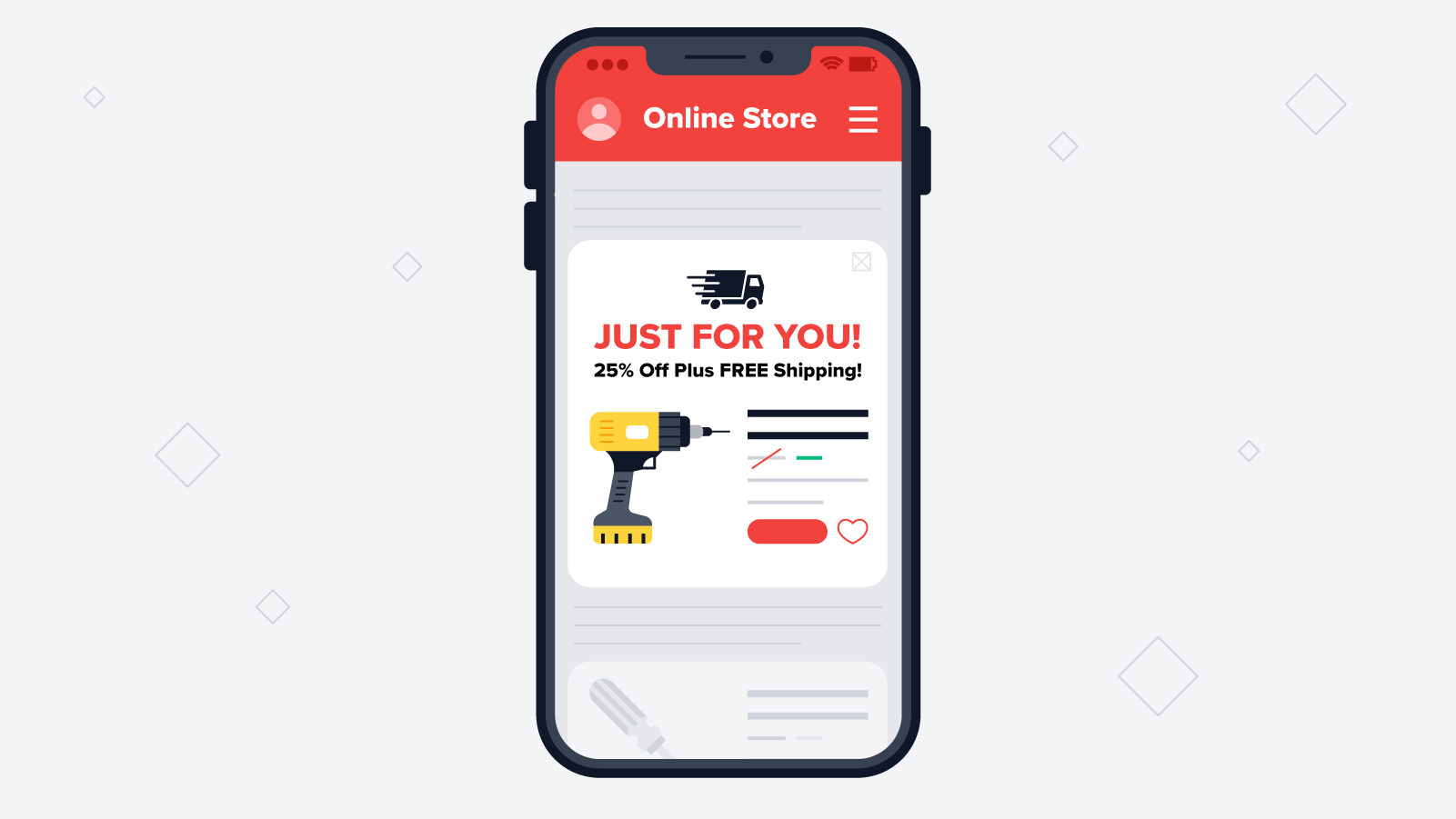
Your customers are just like you — they have busy lives and tons of overlapping priorities. It can be challenging to keep your brand on their radar.
But when you drop in with a special offer related to a product in which they’ve shown interest, you not only remind them that your products are just a click away, you also give them a reason to make a purchase right now.
Engaging your customers with custom offers through email marketing or push notifications naturally increases sales. But, it also keeps your brand memorable and provides an extra layer of personalized marketing to boost retention.
How You Can Use It: Use behavioral analytics to tune in to your customers’ browsing habits. When, for example, you know they’ve viewed an item multiple times or that they often look for items in a specific category, you can trigger special offers. This shows them you’re aware of their needs and ready to offer discounts to help them purchase the items they crave.
5. Create Urgency With Limited-Time Offers
When your offer has an expiration date, your customer has a reason to buy ASAP. Sometimes we all need a nudge telling us that it’s OK to splurge, and there’s nothing like a discount to do that. Some savvy customers may even wait for offers to come along before committing to a purchase.
How You Can Use It: Trigger events based on your customers’ browsing habits. If a customer has spent time looking at one particular item, deliver a customized offer that expires quickly to not only invoke FOMO but to give your customer the satisfaction of having scored a great deal.
6. Target Brick-and-Mortar Customers With Geolocation
If you have both an app and a physical store location, geolocation can be an excellent way to guide an already-engaged customer toward a purchase. When a customer is near your brick-and-mortar location, a strategic and well-timed push notification can lead to a store visit and, potentially, a sale.
How You Can Use It: If your app allows for geolocation notifications, send a push notification to app users who are in proximity (e.g., within a one mile radius) of your store inviting them to shop an exciting sale.
7. Drive AOV With Shopping Cart Add-Ins
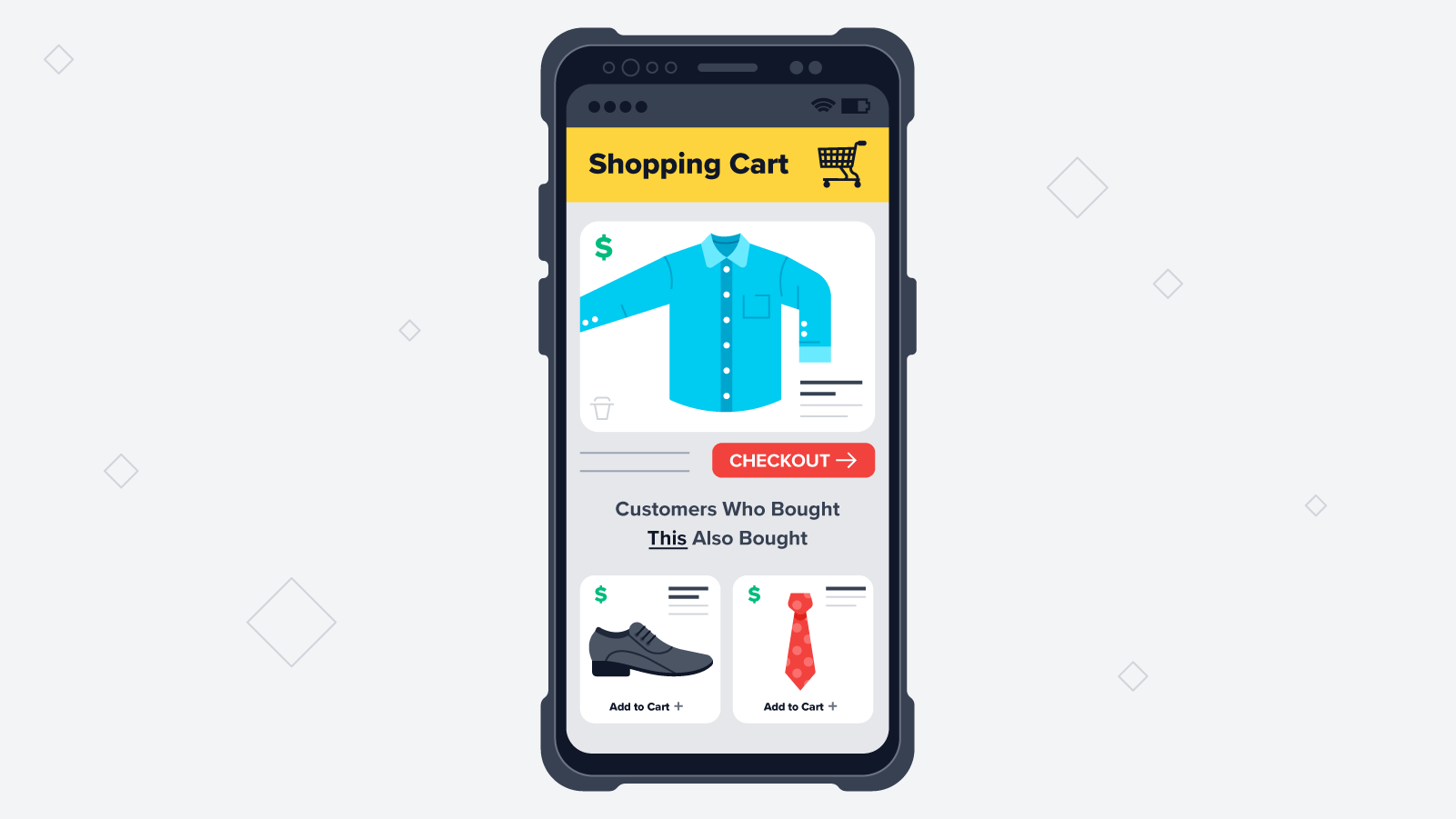
Why buy just one item when you can add complementary items to your order and save on shipping costs?
This ecommerce personalization strategy is like the brick-and-mortar tactic of putting candy, magazines, and other impulse items within reach of customers waiting in the checkout line. The difference is that online retailers can see what their customer has in hand (virtually!) and suggest accessories and related items with ease.
How You Can Use It: Target your customers with cross-sell, upsell, and down-sell opportunities when they check out. Your app acts as a personal shopper, making recommendations that can increase your AOV.
8. Craft Abandoned Shopping Cart Messages
The mobile shopping cart abandonment rate is a staggering 85.65%.* And there are plenty of reasons that customers walk away without ever hitting “check out now.” A well-crafted message can lead customers back to complete their purchase.
How You Can Use It: First, make sure you solve the issues that commonly lead to shopping cart abandonment, like too-high shipping costs, account creation hurdles, or payment security concerns. If everything looks good, trigger an email message or push notification to invite your customer back to pick up the items they left in their cart. Offers like free shipping or price discount can sweeten the deal.
Ecommerce Statistics That Highlight the Benefits of Personalization
More and more, your customers have come to expect an online shopping experience that feels aligned with their unique needs and preferences. Ecommerce personalization is the key to engaging and retaining them.
But don’t just take our word for it — we have stats!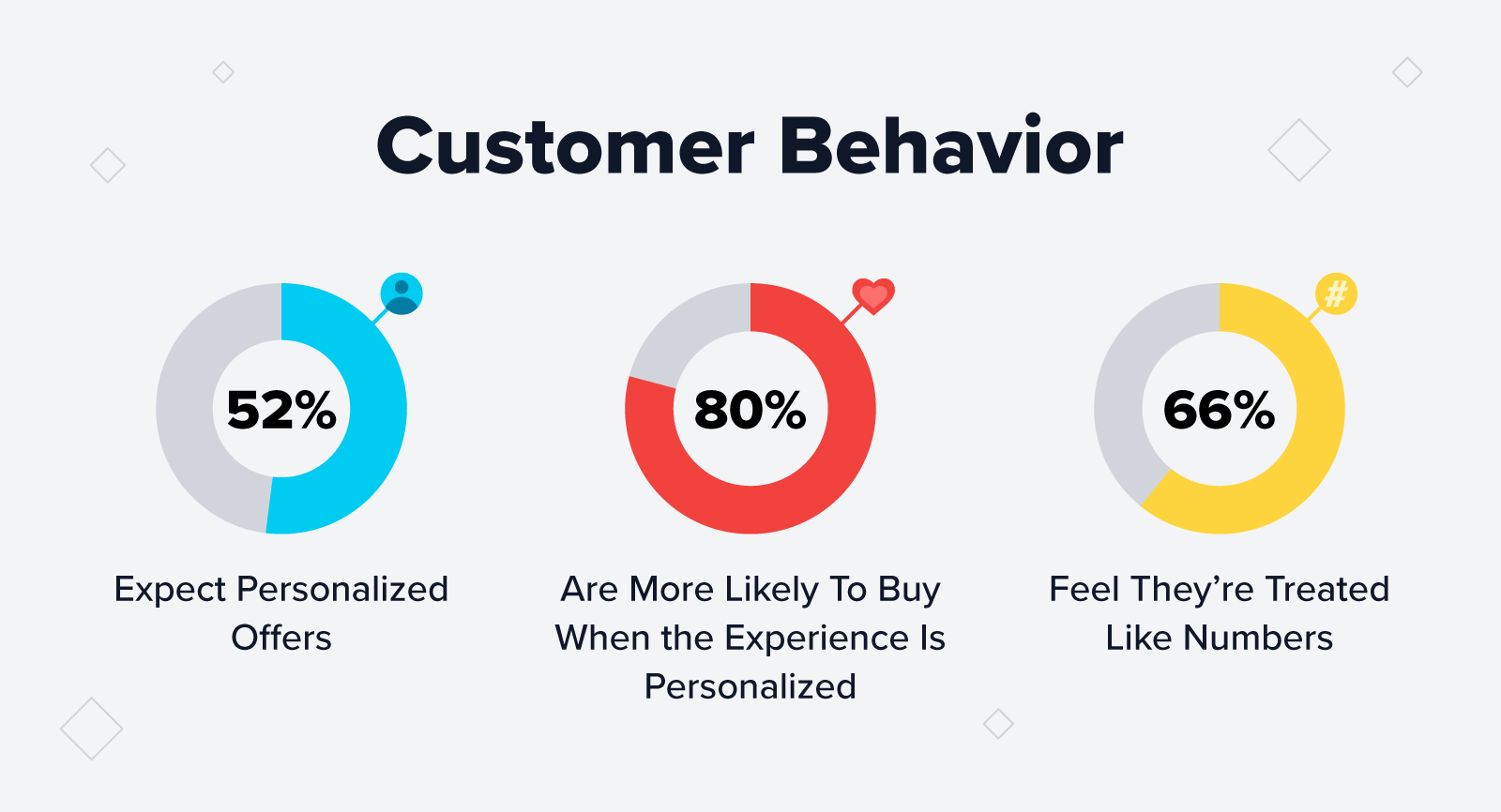
80% of Customers Are More Likely To Buy From Brands That Provide Personalized Experiences
It’s no secret that we humans long to feel seen and understood. In fact, a 2017 online survey revealed that 80% of shoppers are more likely to buy from brands that give them a personalized experience.*
Not only that, but the same research showed that people who believe personalization is important are 10 times more likely to be your most valuable customers. They’re the users you can expect to make more than 15 transactions per year.
52% of Customers Expect Personalized Offers
Personalization isn’t just a marketing strategy, it’s something customers have come to expect. In a large 2020 consumer survey by Salesforce, 52% of customers expected offers from ecommerce retailers to be personalized.* That was up from 49% in 2019 — and there’s no reason to believe the trend is slowing down.
Personalized offers show your customers that you’re tuned in to their needs and preferences and that you value their having a great experience with your brand.
Personalization Can Result in a 20% Average Increase in Sales
There’s a payoff when you meet your customers’ expectations for a personalized experience. Businesses that prioritize personalization see an average 20% increase in sales.*
Fintech startup Jerry used personalization to power its fully automated home and auto insurance agent app. Personalized messaging that combined high relevancy with a clear and customized value proposition allowed the company to increase conversion rates by 20%.
66% of Customers Believe They’re Treated Like Numbers
Not only do the majority of your customers expect personalized offers, but they also want proof that you’re paying attention to their needs and interests.
Are retailers rising to the challenge? Maybe not.
Although customers want a personalized experience, 66% of them say they’re often treated more like numbers than humans.* Without personalization, your customers may feel like your company doesn’t value them as an individual and is only interested in making sales.
11.4% of Marketing Professionals Say a Generic Customer Experience Contributes to Churn
When we surveyed ecommerce marketing executives, we gained some valuable insight into their experiences with customer churn:
- 11.4% listed a generic customer experience (CX) as a primary challenge.
- 12.9% said their company suffered from a lack of long-term customers.
- 20% thought their app or site lacked immediate stickiness.
It’s clear that marketers recognize the value of a personalized customer experience over a generic one. That’s why successful marketers prioritize personalization in their mobile marketing.
What Else Can Ecommerce Sites Do To Increase Customization?
Ecommerce personalization is not only an effective strategy, it’s a necessary one. Your customers expect you to adapt to their changing needs and find innovative ways to make their experience with your app or website feel tailored to them while simultaneously making their lives easier.
CleverTap’s rich mobile marketing platform gives you powerful analytics and essential tools to help you automate ecommerce personalization, improve engagement, increase conversion, and retain your customers by delighting them with an experience that’s made for them.

The Experience Optimization Pocket Guide
Shivkumar M 
Head Product Launches, Adoption, & Evangelism.Expert in cross channel marketing strategies & platforms.
Free Customer Engagement Guides
Join our newsletter for actionable tips and proven strategies to grow your business and engage your customers.















































